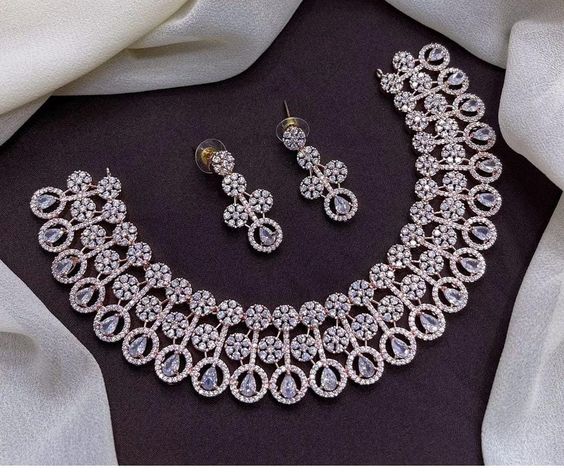If you’re starting a clothing brand or launching your first apparel collection, one of the most critical decisions you’ll make is sourcing fabric. Choosing the right material influences not just the feel and function of your garments, but also your production timeline, pricing, sustainability, and brand identity. But how to source fabric can be a daunting process; especially with the thousands of options available across the globe. Should you buy locally or go overseas? Is wholesale fabric for clothing line development better bought in bulk or through a supplier with low MOQs? How do you ensure consistent quality?
This guide will answer all of those questions and more. We’ll walk through the types of fabric material, the fabric manufacturing process, how to evaluate fabric suppliers, determine fabric cost per yard, and explore options for fabric packaging for shipping. Whether you’re a beginner or scaling a fashion label, this is your go-to roadmap for sustainable, cost-effective, and smart fabric sourcing.
Types of Fabric Material: Know What You’re Working With
Before you can source fabric effectively, you need to understand what you’re sourcing. Different types of fabric material come with unique textures, uses, costs, and sustainability profiles. Here are the most commonly used fabrics in the clothing industry:
1. Cotton
- Overview: Natural fiber from the cotton plant.
- Pros: Soft, breathable, widely available, easy to dye.
- Cons: Prone to shrinking and wrinkling, not always sustainable unless organic.
- Use Cases: T-shirts, casualwear, children’s clothing.
2. Polyester
- Overview: Synthetic fiber derived from petroleum.
- Pros: Durable, wrinkle-resistant, moisture-wicking, affordable.
- Cons: Non-biodegradable, traps odors, environmental concerns.
- Use Cases: Activewear, fast fashion, outerwear.
3. Silk
- Overview: Luxurious natural protein fiber produced by silkworms.
- Pros: Smooth, hypoallergenic, drapes beautifully.
- Cons: Expensive, delicate, ethical concerns unless peace silk is used.
- Use Cases: Lingerie, formalwear, luxury garments.
4. Linen
- Overview: Derived from the flax plant.
- Pros: Lightweight, breathable, biodegradable.
- Cons: Wrinkles easily, slightly rough texture.
- Use Cases: Summer clothing, resort wear, eco-friendly collections.
5. Rayon (Viscose)
- Overview: Semi-synthetic fiber made from wood pulp.
- Pros: Soft, drapey, silk-like feel.
- Cons: Can weaken when wet, not very durable.
- Use Cases: Blouses, dresses, budget-conscious collections.
Knowing your fabric types not only helps in designing but also plays a crucial role in communicating with fabric suppliers and manufacturers.
How Is Fabric Made? A Quick Look at the Fabric Manufacturing Process
To source fabric smartly, understanding the fabric manufacturing process helps you ask the right questions and evaluate the right suppliers.
1. Fiber Production
This is where it all begins. Natural fibers (like cotton or wool) are harvested from plants or animals. Synthetic fibers (like polyester or nylon) are created through chemical processes.
2. Yarn Formation
Fibers are spun into yarns, with varying thickness and texture depending on the end use.
3. Weaving or Knitting
Yarns are woven (criss-crossed) or knitted (looped) into fabric. Woven fabrics are more structured; knit fabrics are stretchier.
4. Dyeing and Printing
Color is added to fabric either as solid dyes or through custom fabric printing techniques like screen printing, digital printing, or sublimation.
5. Finishing
Finishing enhances fabric performance—this includes softening, waterproofing, flame resistance, or pre-shrinking.
Each stage affects cost, sustainability, and lead time. That’s why communicating with your fabric suppliers about their processes and capabilities is key to quality control and branding.
Where to Get Fabric: Sourcing Strategies from Local to Global
When asking where to get fabric, there are several sourcing options based on budget, production size, and business model.
1. Local Suppliers
- Pros: Easier communication, faster delivery, small MOQs, support local economy.
- Cons: May be more expensive, limited selection.
Local fabric shops and mills are ideal for small batches, sampling, or sustainable practices that emphasize low carbon footprints.
2. Wholesale Fabric Suppliers
If you’re scaling a brand or ready to manufacture, look for wholesale fabric for clothing line suppliers who can provide volume, consistency, and competitive pricing.
Global hubs include:
- China: Cost-effective and scalable.
- India: Rich in cotton, silk, and natural dyes.
- Turkey: Strong knitwear production and fast turnaround.
- Italy: Luxury fabrics, wool, and craftsmanship.
- Los Angeles / NYC Garment District: Excellent for startups with varied selections and flexible MOQs.
Explore directories like Alibaba, Fabric Wholesale Direct, Fabrics.com, or niche eco-conscious platforms like Offset Warehouse or Sustainable Angle.
3. Trade Shows and Fabric Fairs
Events like Première Vision, Texworld, or LA Textile Show offer face-to-face interaction with suppliers. These venues allow you to feel fabrics, compare prices, and build relationships.
How Much Does Fabric Cost?
There’s no one-size-fits-all when it comes to fabric cost per yard, but several factors influence pricing:
Key Cost Factors:
- Fabric Type: Natural fibers are often more expensive than synthetics.
- Weave Complexity: Twills or jacquards cost more than plain weaves.
- MOQ (Minimum Order Quantity): Buying in bulk reduces per-yard cost.
- Customization: Custom fabric printing adds to the overall price.
- Dyeing and Finishing: Special finishes for wrinkle-resistance or moisture-wicking increase the price.
- Sustainability: Sustainable fabric sourcing is usually priced higher due to ethical labor, organic certifications, and eco-friendly dyes.
Approximate Price Ranges:
- Cotton: $3–$12 per yard
- Polyester blends: $2–$7 per yard
- Silk: $20–$100+ per yard
- Linen: $8–$20 per yard
- Rayon: $4–$10 per yard
Always ask suppliers for full quotes including freight, taxes, and duties.
How to Choose the Right Fabric Supplier
Finding the right supplier is as important as finding the right fabric. Here are tips to guide you:
1. Request Swatches
Always test swatches before placing a bulk order. This lets you assess color, texture, weight, and durability.
2. Verify Communication & Transparency
Good fabric suppliers will be responsive, clear on lead times, and open about sourcing. Avoid vendors who dodge questions about origin or quality.
3. Check for Certifications
For sustainable fabric sourcing, ask about GOTS (Global Organic Textile Standard), OEKO-TEX, or Bluesign certifications.
4. Negotiate MOQ
Some wholesalers may offer smaller MOQs for startup brands. Be honest about your scale, but also be willing to meet minimums for cost efficiency.
5. Lead Time & Reliability
Lead time matters. Ask for a production calendar, and always pad extra time for delays, especially with overseas shipments.
6. Start Small, Then Scale
Once you’ve validated a supplier, scale up production. Begin with sample runs and small orders before committing to large quantities.
Custom Fabric Printing: Personalizing Your Brand
If you’re launching a brand that values originality, custom fabric printing is a powerful way to stand out. Whether you’re adding logos, creating signature patterns, or designing entire textile prints, many fabric mills now offer on-demand digital printing services.
Types of Custom Printing:
- Screen Printing: Best for high volume, bold patterns.
- Digital Printing: Ideal for photorealistic and low-MOQ runs.
- Sublimation: Common for polyester garments.
Some suppliers specialize in this service, offering eco-friendly inks and water-saving technology to align with sustainable missions.
Fabric Packaging & Shipping: What to Know Before You Order in Bulk
Once you’ve sourced your ideal fabric, don’t overlook the logistics of fabric packaging for shipping. This is particularly important when ordering wholesale quantities.we can use custom printed apparel boxes for protect our cloth products.
1. Fabric Packaging Methods
- Rolled: Ideal for bulk orders to avoid creasing; shipped in plastic-wrapped cylinders or boxes.
- Folded: Space-saving, but may introduce wrinkles; suitable for small batches or cotton types.
- Layered Pallets: For large orders, fabric is stacked flat on pallets for freight.
2. Eco-Friendly Options
- Ask about plastic-free packaging or recycled wrapping paper.
- Some mills now offer compostable wraps and reusable shipping crates for sustainable fabric sourcing.
3. Shipping Tips
- Factor in shipping lead time; sea freight is cheaper but slower than air.
- Ask suppliers for Incoterms (FOB, CIF, DDP) to understand shipping responsibilities.
- Ensure packaging includes moisture protection, especially for natural fabrics.
By knowing how your fabric is packed, you’ll avoid damage, delays, or unexpected costs during transit.
Bonus Tips for First-Time Clothing Entrepreneurs
Here are a few quick-fire recommendations for new designers sourcing fabric:
- Start with a fabric mood board based on your collection’s feel and function.
- Order swatches from 3–5 suppliers before making a decision.
- Visit your local fabric markets; you may find hidden gems and avoid import costs.
- Build relationships; long-term partners will offer better deals and support.
- Always get samples in production color; dye lots can vary significantly.
Fabric sourcing isn’t just about finding what’s available. It’s about aligning with the story you want to tell through your clothing line.
Conclusion
Figuring out how to source fabric isn’t always a linear path, but it’s one of the most impactful steps in building a successful clothing line. The right fabric improves product quality, simplifies manufacturing, reduces returns, and enhances your brand identity. From understanding different types of fabric material and mastering the fabric manufacturing process to navigating fabric suppliers and determining fabric cost per yard, you’re now equipped to make informed, confident sourcing decisions. Whether you’re exploring custom fabric printing, sourcing fabric in bulk, or aiming for sustainable options, remember: the fabric you choose shapes how customers feel in your clothing—and how they feel about your brand. Pairing the right fabric with thoughtful custom packaging for clothing can further elevate the unboxing experience, reinforcing your brand’s quality and attention to detail from the very first touchpoint.








